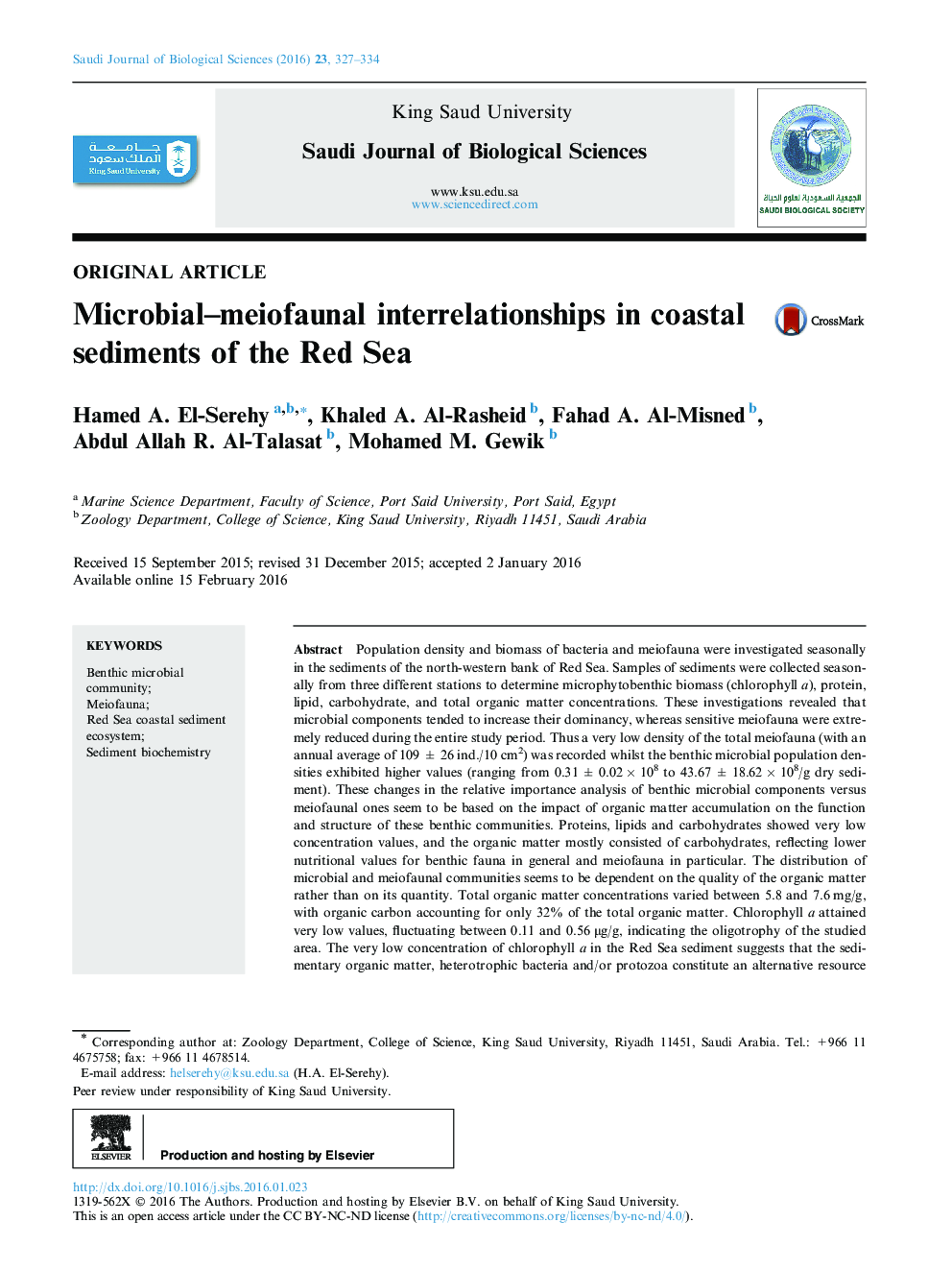| کد مقاله | کد نشریه | سال انتشار | مقاله انگلیسی | نسخه تمام متن |
|---|---|---|---|---|
| 4406129 | 1618672 | 2016 | 8 صفحه PDF | دانلود رایگان |
Population density and biomass of bacteria and meiofauna were investigated seasonally in the sediments of the north-western bank of Red Sea. Samples of sediments were collected seasonally from three different stations to determine microphytobenthic biomass (chlorophyll a), protein, lipid, carbohydrate, and total organic matter concentrations. These investigations revealed that microbial components tended to increase their dominancy, whereas sensitive meiofauna were extremely reduced during the entire study period. Thus a very low density of the total meiofauna (with an annual average of 109 ± 26 ind./10 cm2) was recorded whilst the benthic microbial population densities exhibited higher values (ranging from 0.31 ± 0.02 × 108 to 43.67 ± 18.62 × 108/g dry sediment). These changes in the relative importance analysis of benthic microbial components versus meiofaunal ones seem to be based on the impact of organic matter accumulation on the function and structure of these benthic communities. Proteins, lipids and carbohydrates showed very low concentration values, and the organic matter mostly consisted of carbohydrates, reflecting lower nutritional values for benthic fauna in general and meiofauna in particular. The distribution of microbial and meiofaunal communities seems to be dependent on the quality of the organic matter rather than on its quantity. Total organic matter concentrations varied between 5.8 and 7.6 mg/g, with organic carbon accounting for only 32% of the total organic matter. Chlorophyll a attained very low values, fluctuating between 0.11 and 0.56 μg/g, indicating the oligotrophy of the studied area. The very low concentration of chlorophyll a in the Red Sea sediment suggests that the sedimentary organic matter, heterotrophic bacteria and/or protozoa constitute an alternative resource that is consumed by meiofauna when algae are less abundant. Protozoa, therefore, represent the “missing link in bacteria–meiofauna interaction in the Red Sea marine sediment ecosystem.
Journal: Saudi Journal of Biological Sciences - Volume 23, Issue 3, May 2016, Pages 327–334
